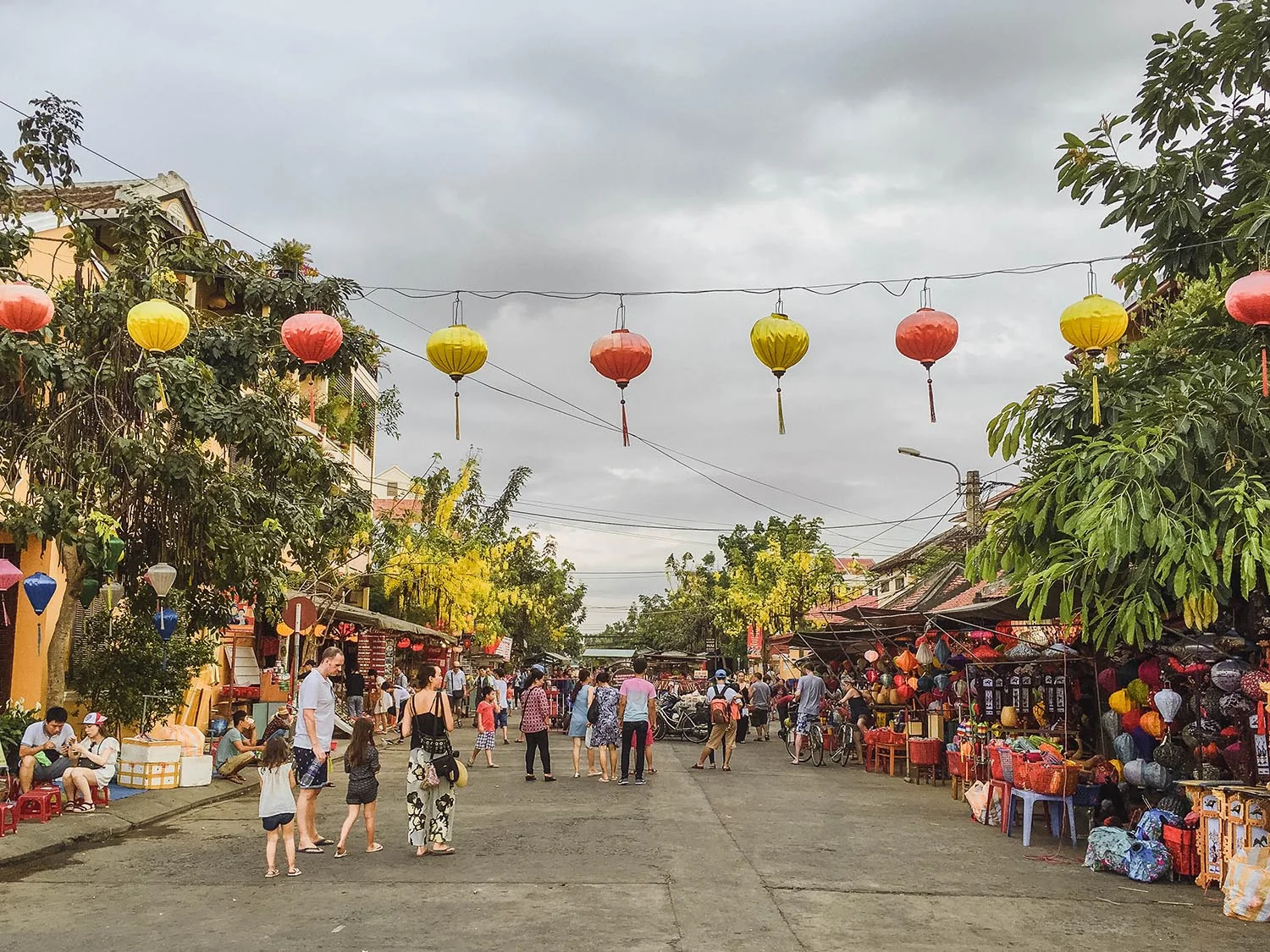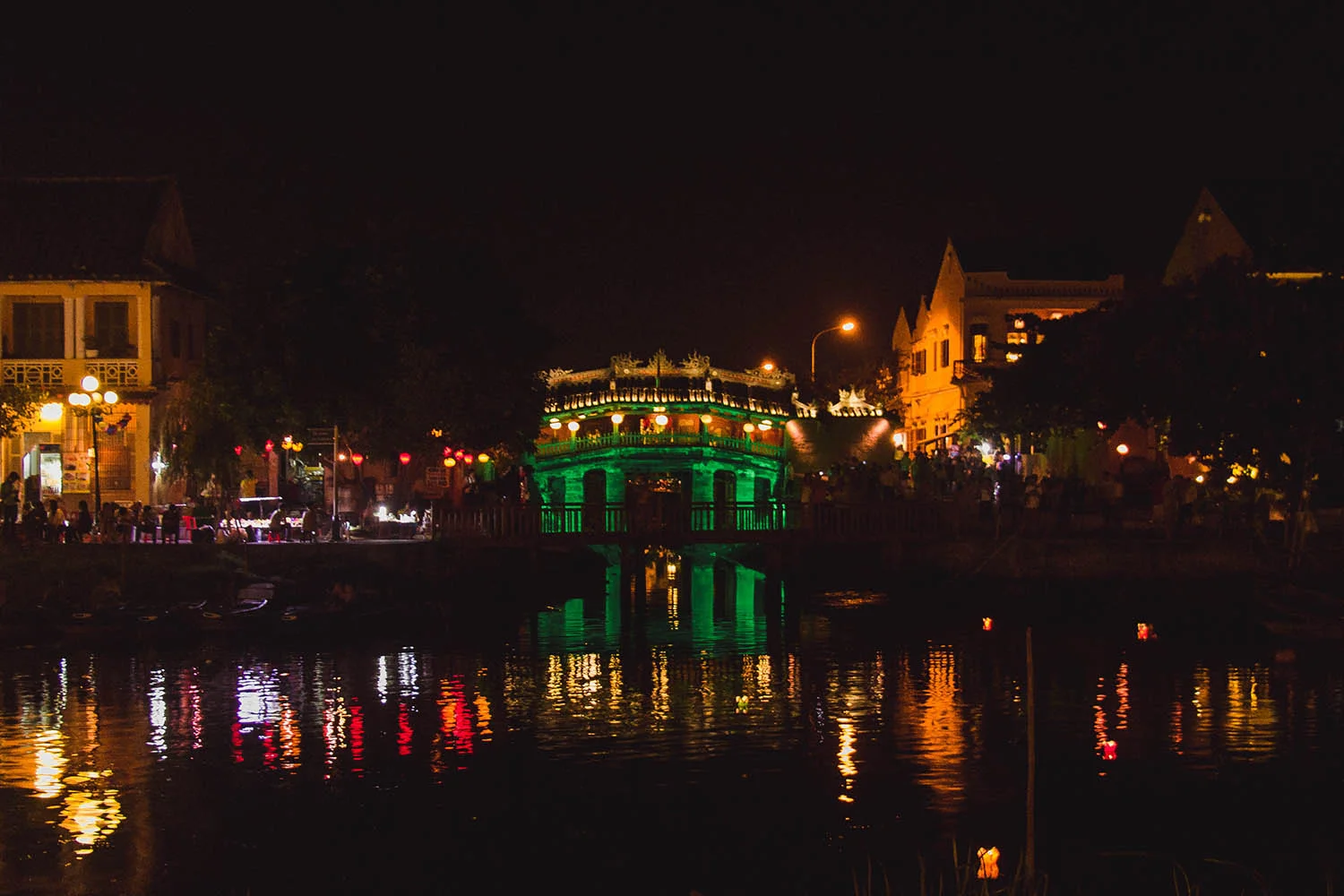Hoi An: Another World
I say this a lot when I visit a new place but, stepping out into the old town of Hoi An at night is an otherworldly experience. That sensation is one of the things I love most about travelling. Witnessing the everyday with fresh eyes and mouth agape, when something can be so commonplace to locals but completely unique and enchanting to a visitor.
It was a sweaty day, as all are in Vietnam, but Hoi An was a brief half hour drive from our hotel in Da Nang. It didn’t take long for the shoreline to narrow down to the quiet Thu Bồn River, for the monstrous construction sites of upcoming mega beach hotels to fade to ornate, old world facades.
We rushed through check in at our hostel, desperate to make the most of the daylight. The sun started to sink as we looked through our to-do list.
Hoi An straddles the shimmering Thu Bồn River and was once considered the leading trade destination in Asia. The village boomed during the 15th and 16th centuries, quickly finding itself at the centre of business from China, Japan and even Portugal.
Today, Hoi An is considered something of a time machine. Its architecture, a mix between Vietnamese fishing village, ancient Chinese sanctuary and old world European trading port, is incredibly well preserved—every narrow alley or bustling high street is stuck out of time. Roads are often criss-crossed by glowing yellow lanterns, under which children laugh and play while music pours out from the bars onto the footpath. Excited chatter and the smell of delicious street food fill the air.
The easiest way to soak up this village’s rich history is spending a day in the ancient town, designated a UNESCO World Heritage Site in 1999. Here you’ll find some of Vietnam’s most prized tourist attractions, from the 200 year old Tan Ky house to the 16th century Japanese Covered Bridge, as well as a small assortment of museums. You’ll need to buy a ticket for entrance into ancient town, giving you access to up to five of these sights.
Hoi An’s architecture is impressively preserved but so are its trading roots. You’ll have the opportunity to tackle the village as a 17th century trader, scouring the best deals on coffee grounds, dried foods, kitchenware, crockery, decor and art. Make sure you visit the eponymous Hoi An Roastery for a brew and several bags of locally-grown Robusta beans while you’re there.
The best time to visit is during a full moon, when the village becomes awash in the glow of traditional lanterns. They’ll be sold on every street corner and even from the river itself, where operators will try to woo you with a romantic ride on their sampan.
If you have time to take a day trip, My Son Sanctuary should be your first and only choice. A sprawling complex of Hindu temple ruins dating back to the 4th century, the sanctuary is another of Vietnam’s UNESCO sites. Guided tours are your best option, and many aim to get you there for the unique sunrise atmosphere.
You can tackle Hoi An in any number of ways, and yet you will always come away with a newfound appreciation for Vietnam’s rich heritage. And even if you don’t, this village is still impossibly picturesque.









